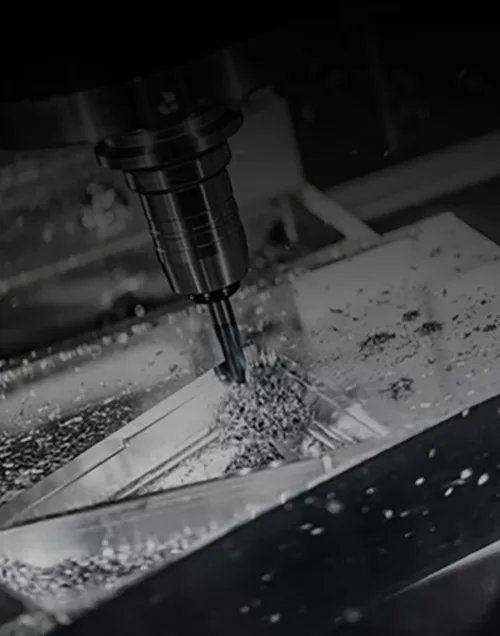In the realm of precision machining, the choice between thread milling and traditional tapping can significantly impact the quality, accuracy, and efficiency of manufacturing processes. As industries increasingly demand high-precision components, understanding the advantages of CNC thread milling over traditional tapping methods becomes crucial. This article explores the key differences between these two techniques and why thread milling stands out as the preferred option for high-accuracy applications.

Fundamental Differences in Machining Principles
Traditional tapping is a well-established method that involves using a tap—a specialized cutting tool with pre-defined thread profiles—to cut internal threads by rotating and advancing into the workpiece. This process is relatively straightforward but often relies on fixed-speed feeds and limited control over cutting forces. On the other hand, precision thread milling uses a milling cutter to create threads by helical interpolation. The CNC machine controls the cutter's movement in multiple axes, allowing for precise control over the thread's pitch, diameter, and profile. This multi-axis motion capability is a game-changer, enabling the production of complex and custom thread geometries that traditional tapping simply can't achieve.
Superior Accuracy and Dimensional Control
One of the most significant advantages of thread milling is its ability to achieve exceptional accuracy. With traditional tapping, factors such as tap wear, tool breakage, and variations in material hardness can lead to inconsistent thread dimensions. The tap's fixed geometry also restricts the range of thread sizes and pitches that can be produced accurately. In contrast, thread milling offers micron-level precision. CNC machines can compensate for tool wear in real-time, adjust the cutting path to account for material variations, and produce threads with extremely tight tolerances. For example, in the aerospace industry, where components must meet stringent dimensional requirements, thread milling ensures that critical threaded connections maintain precise fits, reducing the risk of leaks or failures under extreme conditions.
Enhanced Surface Finish and Quality
Thread milling typically results in a superior surface finish compared to traditional tapping. As the milling cutter removes material in a controlled manner, it generates less heat and friction, minimizing the chances of burrs, rough edges, and thread deformation. In applications where thread integrity and smoothness are paramount, such as medical implants or high-pressure fluid systems, a better surface finish achieved through thread milling improves the component's performance and lifespan. Additionally, the ability to use multiple passes during thread milling allows for fine-tuning the surface quality, ensuring that the threads meet the most demanding quality standards.
Greater Flexibility and Cost-Effectiveness
Thread milling also offers unmatched flexibility in terms of thread design. A single milling cutter can produce multiple thread sizes and pitches by simply adjusting the CNC program, eliminating the need for a large inventory of taps. This flexibility is especially valuable for small-batch production and prototyping, where quick changes in thread specifications are common. From a cost perspective, although the initial investment in thread milling cutters may be higher than taps, their longer lifespan and reduced risk of breakage result in lower overall tooling costs. Moreover, the ability to correct errors during the milling process without scrapping the entire workpiece saves both time and money, making thread milling a more cost-effective option in the long run.
Applications Where Thread Milling Shines
High-accuracy applications across various industries benefit from thread milling. In the automotive sector, it's used to produce engine components with precise thread fits, enhancing fuel efficiency and reducing emissions. In the electronics industry, where miniaturization is key, thread milling enables the creation of tiny, high-precision threads on connectors and enclosures. And in the energy sector, thread milling ensures the reliability of threaded connections in high-stress environments, such as oil and gas pipelines, by delivering consistent quality and accuracy.
In conclusion, while traditional tapping has its place in some machining scenarios, precision thread milling outperforms it in high-accuracy applications. With its superior dimensional control, enhanced surface finish, flexibility, and cost-effectiveness, thread milling has become the go-to technique for manufacturers aiming to produce high-quality, precision components. As industries continue to push the boundaries of precision, the adoption of thread milling is set to grow, solidifying its position as a leading force in modern machining.
 CapabilitiesPrototypes and production partsMechanical ManufacturingMechanical Manufacturing Capability: Excellent Craftsmanship, Creating Exceptional QualityParts Manufacturing and ProcessingParts Manufacturing and Processing: Meticulous Craftsmanship, Creating Premium PartsMaterial Surface FinishesMaterial Surface Finishes: Refining Processes, Reinventing Material ExcellenceInspection and Quality ControlInspection and Quality Control: Precise Control, Quality AssuranceHeat Treatment ServicesHeat Treatment Services: Precise Temperature Control, Reinventing Material ExcellencePrecision AssemblyPrecision Assembly: Meticulous Craftsmanship, Achieving Perfect Combinations
CapabilitiesPrototypes and production partsMechanical ManufacturingMechanical Manufacturing Capability: Excellent Craftsmanship, Creating Exceptional QualityParts Manufacturing and ProcessingParts Manufacturing and Processing: Meticulous Craftsmanship, Creating Premium PartsMaterial Surface FinishesMaterial Surface Finishes: Refining Processes, Reinventing Material ExcellenceInspection and Quality ControlInspection and Quality Control: Precise Control, Quality AssuranceHeat Treatment ServicesHeat Treatment Services: Precise Temperature Control, Reinventing Material ExcellencePrecision AssemblyPrecision Assembly: Meticulous Craftsmanship, Achieving Perfect Combinations IndustriesDeveloping revolutionary productsAutomotivePrecision Machining Services for Auto Parts in the Automotive Manufacturing IndustryMedical Equipment & HealthcarePrecision Medical Machining ServicesMilitary and AerospacePrecision Machining Services for Military and Aerospace ManufacturingElectronics and SemiconductorPrecision Machining Services for Electronics and Semiconductor ManufacturingEnergy and Industrial EquipmentPrecision Machining Services for Energy and Industrial Equipment Manufacturing
IndustriesDeveloping revolutionary productsAutomotivePrecision Machining Services for Auto Parts in the Automotive Manufacturing IndustryMedical Equipment & HealthcarePrecision Medical Machining ServicesMilitary and AerospacePrecision Machining Services for Military and Aerospace ManufacturingElectronics and SemiconductorPrecision Machining Services for Electronics and Semiconductor ManufacturingEnergy and Industrial EquipmentPrecision Machining Services for Energy and Industrial Equipment Manufacturing Metal MachiningProtoypes and production partsTitanium Alloy MachiningPrecision CNC Machining of Titanium MaterialsCopper and Aluminum MachiningPrecision CNC Machining of Copper and Aluminum AllStainless SteelMachiningPrecision CNC Machining of Stainless Steel MateriaDie Steel MachiningPrecision CNC Machining of Die Steel MaterialsComposite Material MachiningPrecision CNC Machining of Composite Materials
Metal MachiningProtoypes and production partsTitanium Alloy MachiningPrecision CNC Machining of Titanium MaterialsCopper and Aluminum MachiningPrecision CNC Machining of Copper and Aluminum AllStainless SteelMachiningPrecision CNC Machining of Stainless Steel MateriaDie Steel MachiningPrecision CNC Machining of Die Steel MaterialsComposite Material MachiningPrecision CNC Machining of Composite Materials Plastic MachiningProtoypes and production parts
Plastic MachiningProtoypes and production parts
